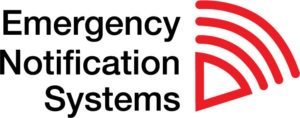 Stay Safe with Emergency Notification Systems
Stay Safe with Emergency Notification SystemsEmergency Notification Systems are crucial for schools, businesses, and government buildings to ensure the safety and well-being of occupants during critical situations. These systems are designed to quickly and effectively communicate emergency information to all individuals in the facility, allowing them to take appropriate actions and stay informed. Here are some common components and features of emergency notification systems:
1. Mass Notification Software: This software serves as the central management platform for sending emergency alerts. It allows authorized personnel to create and send messages across various channels simultaneously.
2. Multiple Communication Channels: Emergency alerts should be broadcasted through multiple channels to ensure maximum reach. These channels may include text messages, phone calls, email notifications, desktop pop-ups, public address systems, digital signage, social media, and mobile applications.
3. Customized Alert Templates: Predefined alert templates can be created for various types of emergencies, such as severe weather, active shooter, fire, or evacuation. This enables rapid dissemination of information while maintaining consistency in messaging.
4. Geolocation Targeting: Modern emergency notification systems often integrate with geolocation services to send alerts specifically to individuals within a designated area. This is particularly useful for businesses or schools with multiple locations.
5. Two-Way Communication: Some systems support two-way communication, allowing recipients to respond to alerts or request assistance. This feature can provide valuable real-time feedback to emergency management personnel.
6. Integration with External Systems: Integration with other safety systems, such as fire alarms, intrusion detection systems, or surveillance cameras, enables automatic triggering of emergency alerts based on sensor inputs, further enhancing response capabilities.
7. Mobile Panic Buttons: In certain scenarios, individuals may need a discreet way to signal distress or send an alert. Mobile panic buttons or dedicated panic apps on smartphones can facilitate this, instantly notifying emergency responders.
8. Testing and Reporting: Regular testing of the emergency notification system is essential to ensure it functions properly. Comprehensive reporting features provide administrators with data on message delivery rates, response rates, and system performance.
9. Integration with Emergency Services: In some regions, emergency notification systems can be integrated with local emergency services, enabling seamless communication and coordination during crises.
10. Training and Education: It is vital to train staff, students, and building occupants on how to respond to emergency alerts and utilize the notification system effectively. Conducting drills and providing educational resources can help enhance preparedness.
When implementing an emergency notification system, it is crucial to consider the specific needs and requirements of the organization or facility. Consulting with security professionals or emergency management experts can ensure the system is tailored to address potential risks effectively.
Learn more about Emergency Notification Systems by Calling Emergency Notification System LLC at 800-335-0229 or visit https://wheelock-products.com/

